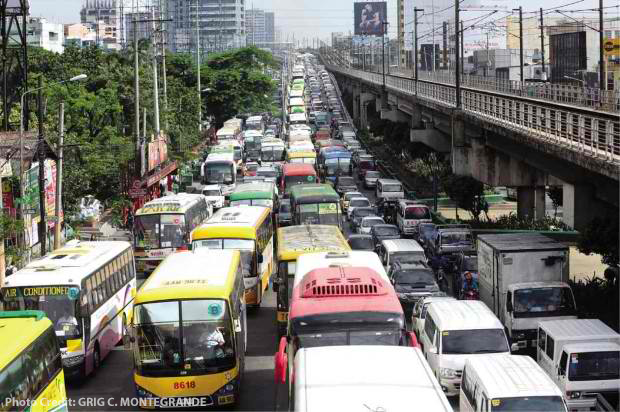Bam: Losses to Heavy Traffic to Reach P6B by 2030
If not fully addressed immediately, a senator warned that economic losses due to heavy traffic in Metro Manila could balloon to P6 billion a day from the current P2.4 billion by 2030.
For this reason, Sen. Bam Aquino has filed a resolution seeking to review the existing Roadmap for Transport Infrastructure Development to formulate effective strategies and solutions to address the negative economic impact of the worsening traffic conditions in Metro Manila.
“Commuters as well as private vehicle owner suffer the monstrous and extremely costly traffic every day in Metro Manila,” Sen. Bam stressed in his Senate Resolution No. 1532, citing a study conducted by the Japan International Cooperation Agency (JICA)
The study entitled, “Roadmap for Transport Infrastructure Development for Metro Manila and Surrounding Areas,” was conducted in coordination with the Department of Transportation and Communications (DOTC), Department of Public Works and Highways (DPWH), Metropolitan Manila Development Authority (MMDA), and other relevant agencies.
The roadmap was approved last Sept. 2, 2014 by the National Economic Development Authority (NEDA) Board.
According to the study’s preliminary analysis, Sen. Bam said the lower-income households will be the hardest hit when congestion worsens by 2030 as they will spend no less than 20 percent of their monthly household income for transport.
“Without intervention, traffic demand will likely increase by 13 percent in 2030, and transport cost will be 2.5 percent higher,” Sen. Bam said.
According to Sen. Bam, relevant government agencies and local government units must contribute to the crafting to an effective planning strategies and traffic management systems in order to improve traffic conditions in Metro Manila.
“The MMDA cannot solve the worsening traffic condition alone. The DPWH, Land Transportation Office (LTO) and Land Transportation Franchising and Regulating Board (LTFRB), and the private sector must also do their share in solving the dilemma,” said Sen. Bam.
Among the factors that contributed to the worsening traffic condition is the significant population increase in Metro Manila which now stands at 16.5 million.
“Maaantala ang ating kaunlaran kung ang araw-araw na biyahe ay ikalulugi ng ating mga mamamayan at ng buong bansa,” added Sen. Bam, a micro, small and medium enterprises’ welfare advocate.

Recent Comments